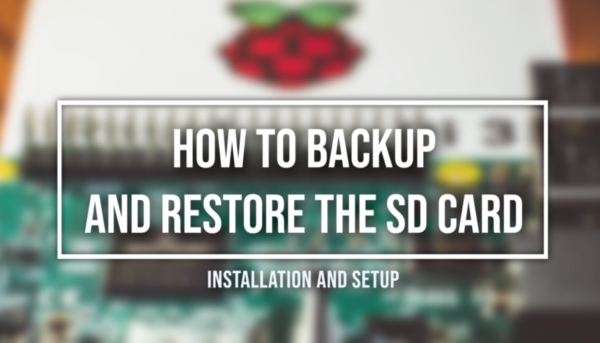Raspberry Pi SD Card

Raspberry Pi SD Card
Raspberry Pi News
In this article, I will explain how to make a backup of the Raspberry Pi SD card and also how to restore this backup if necessary.
Raspberry Pi SD Cards overview
Link to 8GB SD card*
Link to 16GB SD card*
Link to 32GB SD card*
Link to 64GB SD card*
Link to the 128GB SD card*
For Mac - Apple Pi Baker
If you have a PC, you can use the free program Win32 Disk Imager (sourceforge.net/projects/win32diskimager/). If you have a Mac, you can use the program Apple Pi Baker (tweaking4all.com/software/macosx-software/macosx-apple-pi-baker/) for Raspberry Pi SD card backup. Apple Pi Baker for the Mac is also free to download.
The interfaces are very simple. First you select the SD card you have inserted. Then click on "Start Backup" in Apple Pi Baker. When restoring the SD card, you simply select the appropriate backup image that was written to a file to be written back to the SD card.
And your Raspberry Pi SD card backup or restore is done.
For PC - Win32 Disk Imager
Win32 Disk Imager works very similar. You select a file and create an image file to backup the SD card. Then you select the appropriate disk and select either "Read" to create backup or "Write" to restore Raspberry Pi SD card backup. That's about it with this program as well.
Format Raspberry Pi SD card
In this section I will explain how to erase the Raspberry Pi SD card correctly.
For this I recommend the program "SD Memory Card Formatter" from the official SD Association, which also developed the SD card standard. You can download the program from the following URL: www.sdcard.org/downloads/formatter/ The program is available for free for PC and Mac.
After installation you will see a window, which is the only window of the program. At this point, perhaps the note, the window looks exactly the same on Mac and Windows.
At the top you have the possibility to select the Raspberry Pi SD card. Further down you will find some information about the Raspberry Pi SD card. Further down in the window it gets interesting. There are the variants 'Quick format' and 'Overwrite format'. With the variant 'Overwrite format' some additional parameters on the Raspberry Pi SD card are overwritten.
But it is sufficient if you use the "Quick format" variant. Then you give the SD card a name and start the formatting process with the button "Format". After that you will be asked if you really want to do this, because all data on the Raspberry Pi SD card will be irrevocably deleted.
After you have confirmed this, the formatting process begins. This will be completed very quickly. Afterwards you will get a success message, which you can simply confirm. And the whole thing is done.
This process is especially worthwhile if you use an SD card from a camera or a cell phone, for example, to use it for your Raspberry Pi. But even if you have bought a new SD card, you can reformat it once.
* = Affiliate Link (raspi-config.com) is participant of the affiliate program of Amazon USA, which is designed to provide a commission for websites to earn advertising fees by placing ads and links to Amazon.com).
What would you like to do next?
Raspberry Pi News